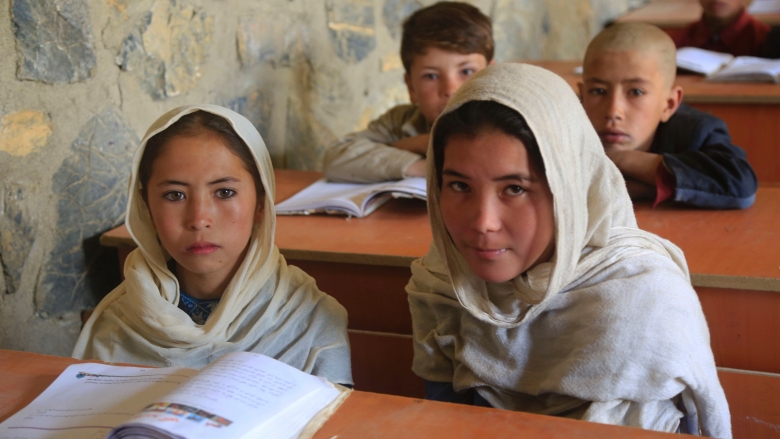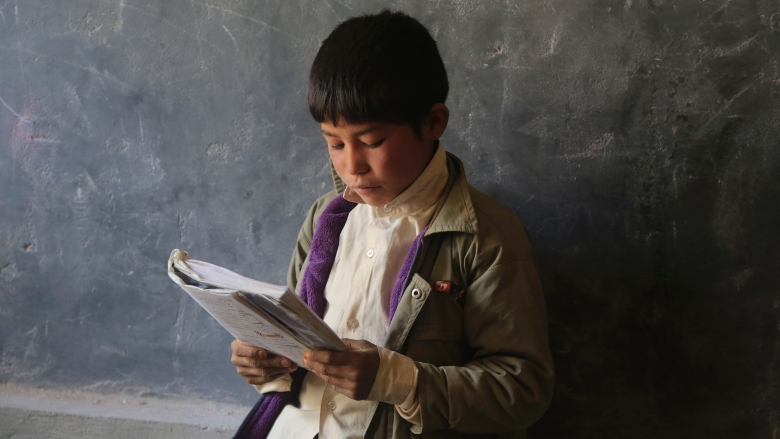Panjab District, Bamyan Province – Every day, eleven-year-old Khadija walks for more than half an hour to arrive at school on time. She is a fifth grader at Dahan-e-Qalacha Middle School in Gandab village, one of the most deprived villages in Bamyan Province.
Dahan-e-Qalacha Middle School, a coeducational institution, sits on a bank of a small river, offering its students their first ever school building, furniture, and school materials for a conducive learning environment.
Prior to the construction of the school building, students attended classes in the mosque, private houses, tents, and even under the shade of trees. Both the heat and cold limited their access to schooling. Students and teachers only had a few boards, chalks, and books at their disposal. Due to the lack of facilities and equipment, students learning conditions were suboptimal.
Khadija recalls the time when there was no school building: “Our school had neither a concrete building nor enough chairs. Most students used to sit on plastic mats or simply on uncarpeted floors. Many classes were held under the shade of the trees.”
Students at Dahan-e-Qalacha Middle School receive a proper education now, says Yar Mohammad, a member of the School Management Council (shura). “Prior to the construction of the school building, a great deal of students’ time was wasted. They had to take out the board, chalks, and their carpets to the assigned places in the open air and then collect them at the end of the class. Also weather conditions like wind and rain would suspend classes frequently.”


